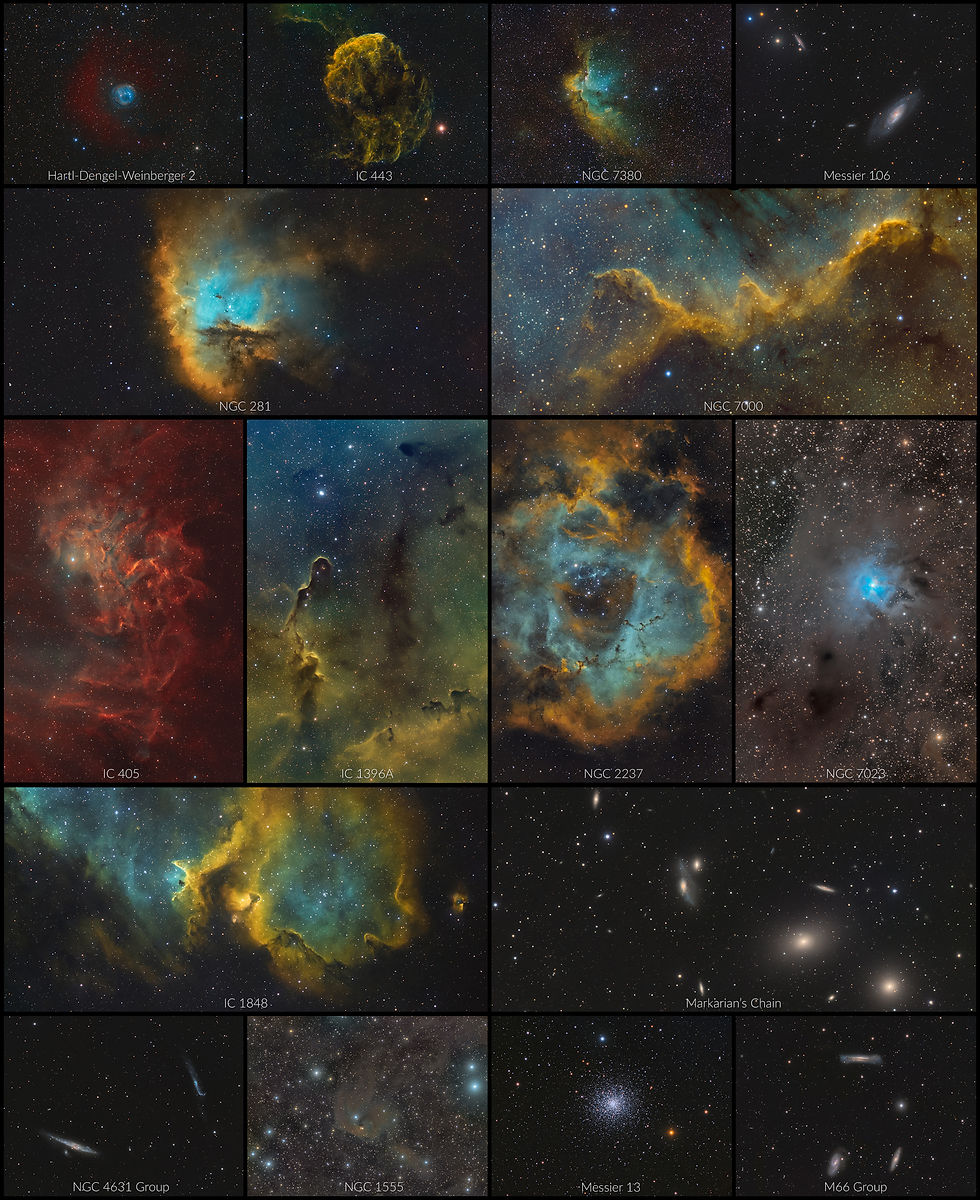Season end 2020
- Ville Puoskari

- Apr 24, 2021
- 2 min read
Summer is approaching fast here in the northern hemisphere, that means that nights arent dark enough to do deep sky photography at my latitude until September. Every year it feels like an old friend goes away, but at the same time the summer break gives some time to do maintenance and upgrades to the observatory and telescopes in it and get a break from all the mental load from image processing. As much as I enjoy this hobby it is a strain on the mind and sometimes a break from it does good for my creativity.
In season 2020 - 2021 I had alot of trouble with a second hand EQ6. After countless hours of fiddling with it I still wasn't able to resolve a huge tracking issue on RA axis that resulted in such large errors that even guiding with 1 second exposures wasn't fast enough to resolve the issue. Luckily I was able to rent another EQ6 from our local astronomy club to keep imaging until the season comes to an end. In total I was able to collect 227,5 hours of deep sky images which I think is a good result because of my mount issues which took atleast 100 hours of good quality nights out of my possible nights. On top of those exposure times I also did 21 hours of photometric observations to Gaia-GOSA observing campaign on two diffrent asteroids, 387 Aquitania and 593 Titania.

This year the observatory also had a major upgrade - an all sky camera. It has been running flawlessly for over 2000 hours since it was installed. There is some minor dew issues in extreme humidity but that will be fixed during the summer. The camera captured multiple shows of auroras and lunar halos and seven bright bolides that were detected automatically. Honestly I'm suprised how well it has worked so far and I can't wait to turn it on again in the autumn to do more timelapses and fireball observations.




Comments